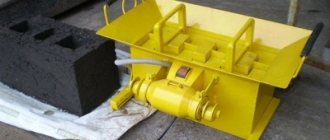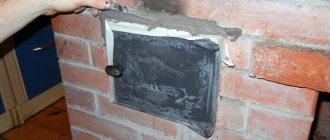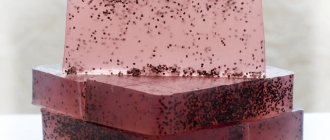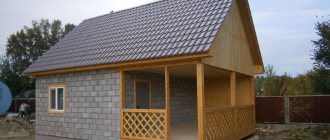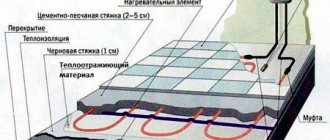Cinder block is one of the most popular building materials. It is made using the vibrocompression method from concrete mortar. A wide variety of buildings are erected from cinder blocks - from sheds and garages to bathhouses and residential buildings.
Making cinder blocks with your own hands
Are you planning to build something out of cinder blocks? Make them yourself! There is nothing complicated in the production technology of these concrete blocks. You need to thoroughly understand the operating procedure, find out the basic requirements and follow the recipe.
Description of do-it-yourself cinder block production technologies
Currently, two technologies for manufacturing these blocks are mainly used:
- In the first, special molds for cinder blocks are used, into which the prepared mixture is poured.
- In the second, special equipment is used to make cinder blocks, which you can easily make yourself.
How to Make a Cinder Block Using Molds
Both wooden forms and those made of metal with a bottom and side walls are used. The most common size is 400x200x200 mm. But if you make molds for cinder blocks with your own hands, you can make them absolutely anything you want. In this case, it is more convenient to make one large collapsible mold, consisting of several cells (about 3-6) of the appropriate size and pour several blocks at once.
To improve the quality of the produced material, the concentration of the solution should be quite liquid and uniform in order to evenly fill all voids.
To make the blocks produced in this way lighter and to reduce their cost, the following available method can be used. Place glass bottles evenly into the poured solution, neck down, collect the excess solution and use it in further work.
After six hours, carefully remove the bottles without damaging the resulting holes and continue drying. Instead of bottles, you can use any cylindrical or rectangular parts of equal size.
Such blocks are removed from the molds only after complete drying. They are laid out on the site to achieve full strength and remove harmful substances from them, for a period of one month to a year, depending on your plans and capabilities. If you need a perfectly flat face of the block, place them on a rubber base
Using machines for making cinder blocks
Using this method, you can get better quality blocks and at the same time increase productivity. To do this, you will need a concrete mixer and a vibrating table with forms or a special machine.
A vibrating machine or vibrating table is more preferable to the production of cinder blocks than the conventional method, since with their use it is possible to produce blocks (remove from molds) without waiting for them to fully set. This is due to the use of a thick, low-shrinkage mortar.
When using a vibrating table, the prepared solution is placed into molds, they are placed on the table and compacted for forty minutes.
Then the mold is turned over and the block is carefully pulled out by tapping. Next, the manufactured blocks are placed on a pre-prepared flat area to complete drying. The manufactured block must not be touched for at least a day in order to avoid deformation.
What is a cinder block
Let's look at what a cinder block is made of. This is a regular parallelepiped 39 cm long, 18.8 cm high and 19 cm wide. The more correct its shape, the easier the laying process will be. Blocks can be solid or hollow. Solid products are used for the construction of load-bearing walls and interior partitions. In contrast, hollow blocks, having a void ratio of about 30%, are more economical. The voids make cinder blocks warmer and increase their sound insulation properties. In addition to the construction of walls, such products are used to insulate concrete frames of buildings.
The production of hollow cinder blocks requires the presence of several holes. The number of holes can be 2 or 3. The shape of the holes can also be very different: round, rectangular or square.
How to make a machine for producing cinder blocks with your own hands
Since there are no particular problems with using a vibrating machine and molds, below we will consider the option of using a homemade machine for making cinder blocks. In addition, it has a significant advantage - the form does not turn over when pulling out the cinder block.
Popularly, such a machine is called a laying machine; its main part is a matrix without a bottom.
Related:
Main technical characteristics of cinder blocks, reviews about them...
To make such a vibrating machine with your own hands, you need to make steel molds (matrices) from blanks 400x250 mm and 200x250 mm, welding them together with an external seam. You will get a matrix measuring 400x200x250 mm for making a standard block (50mm for compaction).
Next, you need to take three pieces of pipe (80 mm) 250 mm long, they will serve to create holes in the blocks. They are placed inside the mold in a row strictly at equal distances relative to each other and the walls of the mold.
Then they are welded to the walls of the mold and to each other with pre-prepared 40x40 mm blanks. Welding with these workpieces is carried out only in the upper part of the mold. All workpieces are made of steel with a thickness of no more than 3 mm. The void formers must be made conical, so they will not create obstacles for the removal of raw blocks. They can be made using a lathe.
Next, a vibrator (from 100 W) is attached to the matrix on the long side using bolts, which must be firmly secured using welding. A visor measuring 400x140 mm is welded on top of the vibrator to protect it from concrete and water.
At the ends of the matrix, strips (a profile pipe of small cross-section) are welded, and rubber padding is made around the perimeter. This will give the necessary stability to the equipment and protect against premature deformation.
Finally, we attach the handles on top. Clamps are installed on them. Now you can pour the solution and get to work.
Main characteristics
As I mentioned briefly above, cinder blocks are based on concrete. Various impurities are added to it, after which pressing is carried out. As a result, we get very light blocks with fairly large dimensions and clear, even edges.
Building from such material is a pleasure. Light weight and large size simplify and speed up the laying process as much as possible. Even without hiring a specialized team, you can build a residential building in just a couple of days.
Like bricks, cinder blocks are made in two versions: solid and hollow. The first option is solid, there are few voids in its structure, due to which it is quite durable. The hollow version has three large holes in its structure, which play two roles at once.
Firstly, due to their presence, the weight of the block becomes extremely small. This significantly reduces the load on the foundation and makes the work of building walls even easier. Secondly, these holes can be filled with heat-insulating material, thus creating walls that perfectly retain heat.
However, everything is fine with the thermal conductivity of cinder blocks, as well as with the sound insulation characteristics. Heat is retained well, sound vibrations are well damped, so a house made from such material is very comfortable to live in.
Of course, all these qualities are possible only if the manufacturing technology of the building material has not been violated. Let's move on to the practical part to find out how the production process works and what is needed for it.
Description of the process of making cinder blocks on a homemade brick press
- A mixture of the desired composition is prepared in a concrete mixer. A concrete mixer is used to improve the quality of the finished mortar and reduce labor costs.
- Then the mixture is placed into the matrix, then it is compacted by vibration and pressure.
- Next, the form rises, and the resulting block remains in the pallet.
In fact, making a cinder block with your own hands in this way takes no more than half a minute. This is achieved using an enhanced vibration mode and a fairly hard solution. Cinder blocks should not be made at low temperatures, since the required strength is achieved within a month at a temperature of at least 20 degrees.
Blocks made independently harden naturally (from a week to a month) in a warm, dry room.
Scope of application
Cinder block is not intended for the construction of buildings higher than one floor. This material is used for the following types of buildings:
- garages;
- one-story residential buildings;
- sheds for keeping livestock;
- temporary buildings;
- country houses;
- workshops.
When building higher residential premises, for example, frame houses, this material is used as insulation.
It is not recommended to build multi-story buildings from cinder blocks due to the low load-bearing capacity of the material.
Buildings built from this material have advantages and disadvantages. Benefits include:
- low probability of fires;
- strength;
- efficiency;
- resistance to temperature changes;
- high speed and ease of construction;
- long service life;
- high rates of sound insulation;
- resistance to biological destruction.
Along with its advantages, the building material has a number of disadvantages. These include:
- toxicity;
- hygroscopicity, that is, high ability to absorb moisture;
- low thermal insulation, which is why buildings need additional insulation;
- difficulties when laying pipes in a cinder block building;
- problems when pulling cables in a building;
- unaesthetic appearance.
The characteristics listed above force builders to use more expensive building materials to insulate the building, insulate the walls from moisture and finish the walls on the outside.
The basis of the building material, slag, sometimes contains acids and sulfur, which are unfavorable to human health, so it is recommended to weather this material in the open air for a year.
Proportions of solution for making cinder blocks with your own hands
With one bag of cement, you can make about thirty-five standard cinder blocks. At the same time, you do not need to bear the costs of certification of your products. Russian legislation does not provide for checking the quality and safety of both the products of this type, made independently, and the equipment used.
The solution for the production of high-quality cinder blocks should have the following composition:
- seven pieces of coal slag filling;
- two parts of coarse expanded clay sand;
- two parts of gravel (from 5 mm to 15 mm);
- up to one and a half parts of cement (preferably M 500);
- three parts water;
- Additionally, components are used that meet your requirements for the quality of the final material (waste bricks, glass, sawdust, pine needles, etc.).
To improve the quality of cinder blocks made on their own, they add a small amount of plasticizer to the solution, which provides the blocks with strength, frost resistance, and water resistance. When making blocks, you need to ensure that the mixture does not spread. Squeeze the small lumps in your hand - they should stick together well, and then throw them on the ground. A high-quality mixture will definitely crumble.
General recommendations and requirements
Cinder block dimensions
Cinder block for interior partitions
The dimensions of the cinder block are standardized - 188 x 190 x 390 mm. Each block has holes. Usually there are 3 of them. For the manufacture of building elements, a mixture of cement of a grade not lower than M400, blast furnace slag and coarse sand is used. Additional fillers and plasticizers are often added.
You can make blocks either manually using molds or using equipment with a vibrocompression function.
On average, one bag of cement is enough to make 36 blocks. The savings are obvious.
The cinder block must have the correct geometry. Even small irregularities will lead to deterioration in the quality of the masonry. To get even blocks, the molds need to be filled not just to the brim, but with a slight mound, because... During vibration, the concrete will shake slightly and settle.
Prices for different types of building blocks
Building blocks
Quality of the material included in the solution
Blast furnace slag must be free of any additional inclusions (especially unburnt coal). Therefore, before using it for production, it is necessary to sort and sift through special devices.
It is advisable to keep the slag in the open air for at least a year. In order not to harm your health, it is important to know the origin and quality of the other components of the solution.
When producing these blocks with your own hands, it is possible to produce them with a variety of qualities and variations in shape that you require. With correctly selected components, they will have sufficient thermal insulation, sound insulation, strength and, accordingly, durability. In addition, such blocks can be made colored if desired: additionally add the desired dye to the finished mixture (for example, chalk, red brick powder, etc.).
As can be seen from the above, making cinder blocks yourself is a really fast and elementary process, and if you follow all the manufacturing rules, you can get a fairly good quality material, you can see this by watching the following video:
Homemade machine with a vibrating device: what is required for this
Tools and materials you will need:
- electric welding machine;
- angle grinder for metal work;
- vice;
- locksmith tools;
- electric motor (500-750 W);
- metal sheet and strip (3 mm);
- pipes (75-85 mm);
- bolts, nuts;
- sheet rubber.
Sequencing:
- The size of the form is determined. You can use standard sizes (400x200x200 mm). If blocks of a different size are needed, they are measured and the shape is designed based on the obtained values.
- A drawing is being prepared.
- Using a grinder, the walls of the mold are cut out of metal. The number of side walls is determined by the number of compartments. You can make 1,2 or more identical compartments. The output will be the same number of cinder blocks. The simplest machine contains 1 compartment.
- The side edging is assembled by welding. First you need to grab the metal and make sure that it is connected correctly. After this, weld it completely.
- Metal tubes are cut to the height of the mold. You need to make longitudinal cuts on the sides and form cone-shaped cylinders.
- The cones are welded to the bottom of the matrix. A transverse jumper is made between them, and plugs are placed on top.
- The bottom is welded to the side edging.
- The matrix tray is lined with rubber to protect the bottom edge from damage.
- For stability, you can weld strips from profile pipes with a small cross-section.
- Handles are attached to the side for moving and lifting.
- The thread is installed and the electric motor is attached to it.
- The top cover is screwed in, in which holes are made for the cones. The cover must correspond to the internal dimensions of the matrix.
- An anti-corrosion coating is applied.
- A test run of the installation is performed. It will show you what adjustments need to be made.
Additional Information! A homemade vibrating machine for expanded clay blocks works on the same principle.
Instructions for creating homemade containers
Containers for homemade molds can be of different sizes, both standard and non-standard. It all depends on the wishes of the owner and his preferences.
Please note : the larger the blocks, the less mortar will be needed to lay them and the fewer cold bridges there will be through the seams between the products.
Large blocks in size are convenient and practical, but it is better not to make forms over 2 m in length or width , because such formwork will be bulky and difficult to transport and lift. It is better to make several formworks, but smaller ones.
To make your own mold, you need to:
- First, decide on the dimensions of the future workpiece, and then cut out the building material according to these dimensions (4 walls, bottom and, if necessary, partitions).
- Set the height of the elements and cut the walls to this height.
- The walls of the formwork must be mounted in such a way that the transverse parts are inserted into the longitudinal ones and thereby form cells of the same size.
- Form the bottom from building material or line it with cellophane instead of the bottom.
- If you need to make hollow cinder blocks, then you will also need void formers for these purposes. They can be wine or champagne bottles filled with water. Bottles can replace pipes with a diameter of about 6 cm or rectangular wooden blocks.
- Insert void formers into the container and secure them. The number of voids in the finished product should not exceed 40% of the total mass of the block.
- Pour the solution and wait a day so that the material can be removed from the mold and transferred to the place for subsequent drying.
How are cement-sand blocks produced?
Where would you prefer to live: in a private house or apartment?
This composition of ingredients allows material manufacturers to not only save financial resources due to the low cost of raw materials, but also provide improved performance characteristics. The popularity of sand blocks has increased among customers, as it is a competitive raw material used in the construction of structures.
Manufacturing involves the technology of semi-dry vibrocompression on equipment with increased productivity. The production stages are as follows:
- Mixing raw materials components.
- Filling into steel molds.
- Compacting the fraction until homogeneous.
- Drying products under infrared rays.
- Keep in a ventilated room at room temperature for 4 weeks.
Expert opinion: Sand block walls
Sand concrete blocks are considered durable and reliable and are often used to build foundations. They have good sound insulation and are completely environmentally friendly. Keep in mind that when building a house from sand concrete, you will need to spend money on additional insulation of the walls, but the price of such blocks is low, which is why they are often used in private construction. The heavy weight of sand concrete allows them to be used only in conjunction with the most stable foundations.
Dmitry Orlov
Types of building blocks
Brick is still the main material in the construction of high-rise buildings, but for low-rise construction it is cheaper to use other building materials. If you exclude wood, which is now expensive, the choice will still be varied. Modern wall materials are made from:
- foam concrete;
- slag concrete;
- aerated concrete;
- expanded clay concrete.
Block characteristics comparison table
As a filler for cinder blocks, a variety of and sometimes exotic materials are used, which are industrial waste: screenings, broken glass and bricks, sawdust, wood chips.
Let's first consider how expanded clay blocks and cinder blocks are made independently, as the most budget-friendly among all the above building materials.
Expert opinion: Machine for the production of cinder blocks
If you do not have the necessary knowledge and skills to manufacture a machine yourself, we recommend renting equipment. If you want to make your own machine for the production of building blocks, use only high-quality materials. We advise you to pay great attention to the stage of creating a design drawing and calculate all the nuances in advance. Take factory equipment or ready-made equipment of friends and acquaintances as a sample.
Dmitry Orlov
Forms for foam concrete blocks
After manufacturing, foam concrete is in a liquid consistency and spreads over the surface of the equipment, taking into account its viscosity. Not only their size, but also the quality of the finished product depends on the form for the production of foam blocks.
The material and type from which the technological equipment is made primarily depend on the turnover requirements and the scale of production. Turnover depends on the time that passes from pouring to pre-curing.
According to the design features of the form, there are two types - one-piece and detachable. In addition, they may differ in the number of blocks that can be poured at the same time, i.e. single and multi-seat.
Various types of technological equipment make it possible to obtain both finished piece blocks and a solid mass, which, after being removed from the equipment, is cut. Of course, molds for foam blocks are made by hand of the first type, since they allow you to obtain a finished product.
The disadvantage of equipment for the production of piece blocks is that they allow the production of products of a fixed size. Most often, blocks are produced with dimensions of 200*300*600 mm.
The most common materials for making molds are: moisture-resistant plywood, plastic and metal. Not only the technological and operational properties of the equipment, but also its price depend on the type of material.
Plywood forms
Block forms
Plywood forms
As a rule, such forms are made with a metal frame. Metal structures are necessary in order to give the plywood the necessary rigidity and also prevent its deformation. As a result, this has a positive effect on the quality of products.
The main advantage of plywood equipment is its low cost and ease of manufacture. Operation also does not require large expenses. Molds can withstand at least 40-50 pouring cycles. If you properly maintain and care for plywood equipment, it can last even longer.
A do-it-yourself mold for foam blocks is a knocked-down plywood box with cells. Each cell corresponds to the size of the future product.
Plastic mold
Plastic molds
Plastic molds for foam blocks are the cheapest. They are easy to use and do not require lubrication before filling. The disadvantage of such forms is their fragility. This is due to their short service life.
Recently, metal frames have begun to be produced into which plastic equipment is installed. They allow you to increase the durability of the forms.
Metal molds
Metal forms
The most durable are metal molds for foam blocks, but they are also the most expensive. However, if we take into account the length of their service life, the cost of the molds is an insignificant part of the cost of finished products.
Making metal equipment is much more difficult. If you do not have this opportunity, then you can look for used foam block molds, which will cost much less than new ones.
Types and parameters of blocks
Depending on the presence of cavities, materials are differentiated by type:
- Hollow type, providing thermal insulation of buildings and protection from extraneous sounds. They are in demand when constructing permanent walls and are easily combined with other finishing materials. The weight of the products ranges from 8 to 40 kg.
- Solid construction for increased durability. It is used in the construction of foundations; its characteristics correspond to the parameters of silicate products. Weight – from 100 to 2000 kg.
Table of sizes and types of sand blocks
The dimensions of the products affect the scope of application in construction. The standards provide the following size ranges for the production of blocks:
- length 190 – 500 mm;
- width 90 – 500 mm;
- height 185 – 300 mm.
Characteristics of hollowness and dimensions of sand block (cinder block)
The following product sizes are available:
- length 880, 1180, 2380 mm;
- width 300, 400, 500, 600 mm;
- height 280, 580 mm.
According to their purpose, sand blocks are divided into the following types:
- wall, with increased width, used in the construction of walls in one or 2 rows;
- partition walls, have increased moisture resistance. They are used for the construction of interior walls and partitions;
- facing, which do not depend on temperature changes, exposure to moisture, or negative natural factors. Used for finishing external wall surfaces.
Types of sand blocks
Fillers are used to fill the cavities of sand blocks. These are small crushed stone, expanded clay, slag, materials with the addition of sawdust and wood shavings.
